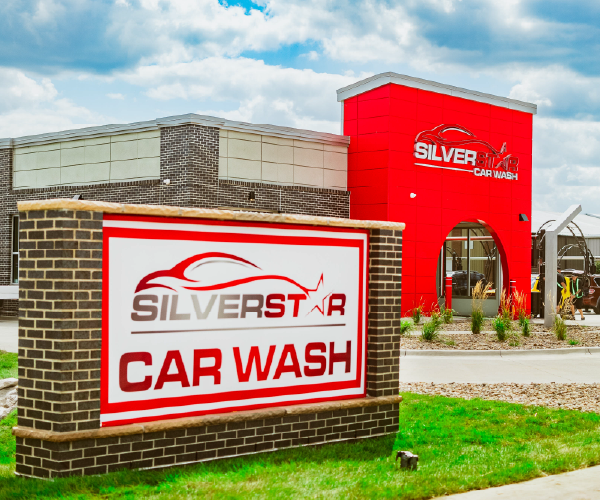
Stay Ahead of the Curve
January 1, 2014
5 minute ReadSmall business owners may wonder what, besides lowering prices, can be done to get ahead of the competition. But the history books are filled with stories of wildly successful companies growing out of seemingly simple services. Car washes may seem simple, but with the right business practices and value-added services, there are just as many ways to inspire innovation and beat out the competition as in any other industry.
THE INNOVATION DYNAMIC
Time and time again, innovation has been the critical factor for attracting more customers and increasing profits. Whether this innovation includes a fresh approach to the customer experience or offering a whole new service, all innovations require viewing a problem from a new perspective. For busy small business owners, getting this fresh take on their business is easier said than done. David Ciccarelli, co-founder and CEO of Voices.com, an online marketplace connecting businesses with voice over talent, recommended visiting new cities: “Exploring invigorates the senses, makes you more aware of your surroundings and lends greater perspective. Try spending at least a week away … [which] presents great opportunities to navigate, experience a different culture and be exposed to fresh ideas.” While a vacation may not be the first thing that comes to mind when trying to increase profits, exploring another culture or another country’s car wash industry could be the seed of inspiration needed to launch a critical innovation.
Sabrina Parsons, CEO of Palo Alto Software and a contributor to the Forbes website, also pointed out, “There are a lot of people in the leadership world or very experienced CEOs in Fortune 500 companies who will require their executives to take a two-week vacation when they are not allowed to check in. The CEOs say that is when their executives come back and have their best ideas.” Even if you aren’t able to take two weeks off, try taking a long weekend to disconnect. Use that time to step back and assess new business ideas, she suggested.
For many businesses, though, adding or making changes to a business just seems like too great a financial risk. Owners assume they have to completely develop something — a new service or market campaign, for example — before introducing it to customers. Parsons suggested the opposite: “Figure out a way to take a sample of your customer and see if the new thing works before committing 100 percent. That way you can figure out what the problems may be and adjust those dials and knobs with more innovation.”
Parsons shared an example of a coffee shop that wanted to launch a foosball league to bring in new customers. They didn’t want to commit to a full-scale league of 25 teams, so they started with just two teams and promoted the games on Facebook. “People got really excited about it and came down to the coffee shop in the evening to watch. The owners thought, great, this is actually bringing attention to us. Now let’s figure out how to do this more full-scale,” she said.
BACK TO BASICS
Before launching into new innovations, owners should identify a clear brand message that the entire business is built around. Colleen Sheehy Orme, marketing consultant and former business columnist, tells clients that the brand should resonate throughout the whole business. It should be reflected in every aspect of the operations from the marketing campaign to how the customers are greeted to the employee uniform.
Focusing on the brand, Sheehy Orme explained, “sounds very simple, but most business owners are the CEO, Chief Everything Officer. It’s difficult for them to think about the brand on a daily basis because they’re thinking about how to pay invoices or take care of customers.” But when owners go back to the brand as the basis of all business decisions big and small, “The brand becomes extremely unifying, and you are targeting the best bottom-line results.”
She noted Starbucks as an example of this. “When Howard Shultz became CEO of Starbucks, he wanted it to be what was called the third place. Home was the first place, work the second place, and Starbucks the third place you would go if you had nowhere else to go.” He weaved that brand message into every aspect of the Starbucks experience, making that first coffeehouse a friendly, comfortable environment where the cashier greeted customers by name as they walked through the door. Today Starbucks has more 19,000 locations globally, and yet it’s easy to see how that brand message has guided countless decisions — from the comfy chairs to the free Wi-Fi to the music sold at the register.
Another fundamental strategy for inspiring innovation is setting goals and tracking your company’s progress. While this may seem like common sense, small business owners actually often overlook this basic business practice. Parsons has heard many small business owners say of their decision-making methods, “Oh, I just have a gut feeling.” But if they want a business to grow and get healthy, “They have to get beyond the gut feel. If they’ve been tracking, they don’t have to wonder if it is the right time to hire or buy a large piece of equipment.”
Finally, for customer service based businesses like car washes, employees are critical to bringing in profits, yet one position in particular is often overlooked: the greeter/cashier. According to Sheehy Orme, who consulted for a car wash company, the greeter/cashier is “the most misunderstood position at the car wash.” This employee essentially dictates what the average ticket is going to be. “I saw that position as a sales position, and I hired someone with a salesperson personality.” She asked the employee to focus on increasing the average ticket price, and six weeks later that car wash location had increased its profits by $16,000.
RELAYING THE MESSAGE
Since employees are so critical to a car wash’s success, sharing data and information with them can be a powerful motivator to drive innovation and improve the bottom line. In fact, metrics coupled with knowledge of the owner’s goals gives employees what they need to effectively innovate and perform independently on a daily basis. Parsons explained, when employers keep their objectives or goals to themselves, “Employees are just employees and that’s all they act like. They don’t get empowered to think about the big picture.” Business owners should be clear with employees about what they are trying to achieve in the next one to three years. Once armed with this knowledge, their suggestions and possibly even their approach to work will be in sync with the company’s stated goals.
Although unorthodox and a bit frightening for most owners, sharing revenue and expense data with employees can also improve performance. According to Parsons, “More often than not, employees have unrealistic ideas of what sort of profit a business is pulling in. Studies have shown that if you ask employees in any business, they always think a profit margin is no less than 30 percent, sometimes they will say 50 percent. Most businesses have profit margins that are, if they’re lucky, 6 or 7 percent. This discrepancy sometimes leads employees to be a little bit more careless because they think the owners are getting rich and they’re only getting paid $12 an hour.”







